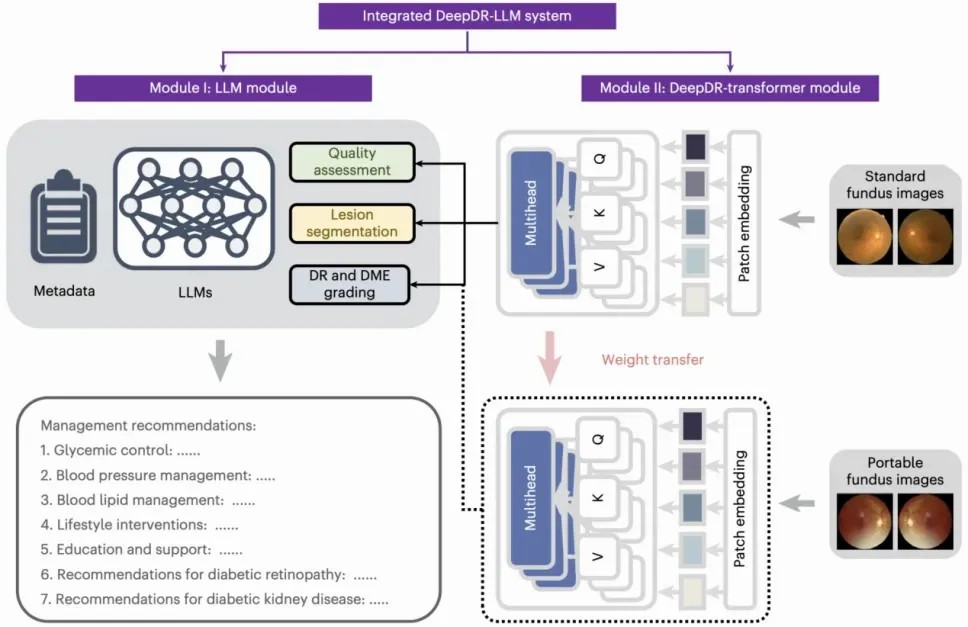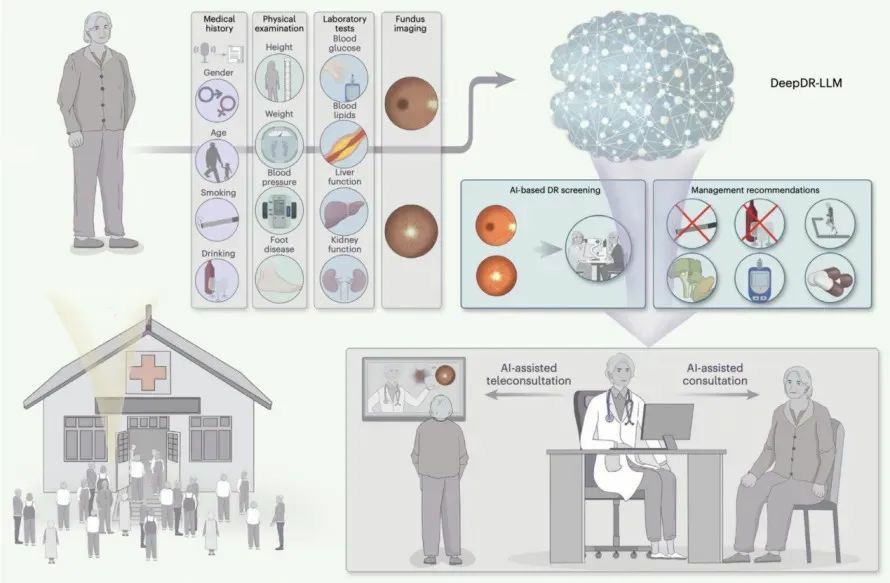(Translated By YU.Y.C.)Diabetes is the fastest growing major chronic disease in the world, with diabetic retinopathy (DR) as the most common diabetes-specific complication, affecting 30%-40% of people with diabetes and causing blindness in severe cases. The situation of diabetes prevention and control is more severe, especially in the grass-roots and remote areas, the lack of appropriate technology for diabetes management, the number and experience of grass-roots doctors can not meet the actual needs of diabetes management.

Overview of the multimodal large model system for diabetes diagnosis and treatment
Recently, the world's first multi-modal large model of diabetes diagnosis and treatment was released, giving a digital solution to treat "sugar". The system fully demonstrates the advantages of "large language model and deep learning technology", and utilizes 372,000 basic chronic disease diagnosis and management data and more than 500,000 fundus images for training and optimization, which can realize the recommendation of diabetes management opinions based on clinical information, accurately predict the progression of diabetic retinopathy based on fundus images, and then generate clinical diagnosis and treatment opinions, helping primary doctors to better diagnose diabetes and diabetic retinopathy, giving patients personalized diagnosis and treatment advice.
According to reports, the research team invited 10 well-known scholars in diabetes-related disciplines to form an international multidisciplinary expert committee, taking the diagnosis and treatment consensus formed by experts on each case as the standard answer, and conducting blind scores on the multi-modal large model of diabetes diagnosis and treatment and the diagnosis and treatment opinions given by grass-roots doctors.
Fundus images from Beijing, Shanghai, Guangzhou, Wuhan and Hong Kong and six countries including Singapore, Thailand, the United Kingdom and Uzbekistan were tested on the model, and the results showed that its diagnostic ability of diabetic retinopathy reached the level of professional ophthalmologists.
The model was jointly studied by the team of Professor Wong Tien Yin, a well-known expert in ophthalmology of Tsinghua University and Beijing Tsinghua Changgung Hospital, Professor Sheng Bin, Department of Computer Science/Key Laboratory of Artificial Intelligence of the Ministry of Education, Shanghai Jiaotong University, Professor Jia Weiping and Professor Li Huating, Sixth People's Hospital Affiliated to Shanghai Jiaotong University School of Medicine, and Professor Qin Yuzong, National University of Singapore. The model carried out a prospective study that followed 769 primary diabetic patients in China, and confirmed that after the system was incorporated into the diabetes diagnosis and treatment process, it could effectively improve the diagnosis and treatment level of grass-roots doctors, provide personalized recommendations for patients, significantly improve the self-management behavior of newly diagnosed diabetes patients, and improve the referral compliance of diabetic retinopathy patients. The results were recently published in Nature Medicine.

Vision of Diabetes diagnosis and treatment multi-modal large model system into the grassroots diabetes management and diagnosis process
"The multi-modal large model for diabetes diagnosis and treatment is expected to significantly improve the level of grass-roots diabetes management and treatment in low - and middle-income countries, thereby improving the prognosis of diabetes patients, and providing a revolutionary digital solution for future global diabetes management." Wong Tien Yin said.
